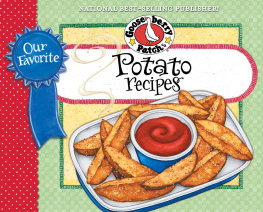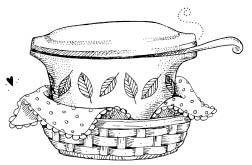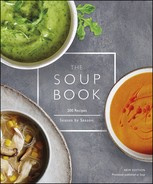

2014 by Ellen Brown
Photography 2014 Felicia Perretti
Published by Running Press,
A Member of the Perseus Books Group
All rights reserved under the Pan-American and International Copyright Conventions
This book may not be reproduced in whole or in part, in any form or by any means, electronic or mechanical, including photocopying, recording, or by any information storage and retrieval system now known or hereafter invented, without written permission from the publisher.
Books published by Running Press are available at special discounts for bulk purchases in the United States by corporations, institutions, and other organizations. For more information, please contact the Special Markets Department at the Perseus Books Group, 2300 Chestnut Street, Suite 200, Philadelphia, PA 19103, or call (800) 810-4145, ext. 5000, or e-mail .
Library of Congress Control Number: 2014936542
E-book ISBN 978-0-7624-5542-3
9 8 7 6 5 4 3 2 1
Digit on the right indicates the number of this printing
Design by Joshua McDonnell
Edited by Zachary Leibman
Typography: Avenir and Wisdom Script
Food Styist: Brian Croney
Prop Stylist: Lisa Russell
Running Press Book Publishers
2300 Chestnut Street
Philadelphia, PA 19103-4371
Visit us on the web!
www.runningpresscooks.com


Table of Contents


Lifelong friendship is even more comforting than a bowl of soup, and this book is dedicated to my lifelong friend, Nancy Gray.
Soup puts the heart at ease, calms down the violence of hunger, eliminates the tension of the day, and awakens and refines the appetite, is the way Auguste Escoffier, the preeminent French chef of the early twentieth century, saw the role of soup at meals. Later in the century, legendary food writer M.F.K. Fisher asserted that it is impossible to think of any good meal, no matter how plain or elegant, without soup or bread in it.
Perhaps this is why soups play such an important role on restaurant menus as well as in home kitchens. Chefs create signature soups as a reflection of their philosophy of cuisine. And then there are those wonderful surprisesthe soup of the dayadded to the menu to reflect seasonal ingredients and the climate at that precise time of year.
For most months of the year, the soup put before you is hot, and the fragrance of the long-simmered ingredients waft upward in the steam to your nose. But then there are times when soups are served chilled, and these comfort you by naturally reducing your temperature on the hottest of summer days.
Soups are the epitome of comfort food, a term that only entered the dictionary in the mid-1970s but has been around since cooking began. Neuroscientists define comfort as the opposite of stress, and humans are constantly finding ways to relieve themselves of stress. While pharmaceuticals can play a role, even faster and easier is finding this restorative state through food.
Comfort foods bring us a sense a security, a reward, and a feeling of connectedness to a larger community. This is why we crave different comfort foods when were in different moods. If youre feeling isolated and lonely, you might want a comfort food linked to a sense of community in your brain; at other times, when facing daunting physical or metal tasks, the need is for food that signifies a reward.
Soup can be any and all of these. It harkens back to our earliest memories, before food had to be chewed or we had teeth with which to chew it. Our muscles prefer foods that dont make them work very hard, and a bowl of soup certainly fits that category, even if topped by crunchy croutons. As poet Maya Angelou writes, Whenever something went wrong when I was youngIf I had a pimple or if my hair brokemy mom would say, Sister mine, Im going to make you some soup. And I really thought the soup would make my pimple go away or my hair stronger.
Foods create both chemical and emotional responses. Sugar and starch produce serotonin, a neurotransmitter that increases ones sense of happiness. Antidepressants like Prozac replicate how serotonin works in the brain. Salty foods like potato chips make the brain release oxytocin, a hormone also triggered by sexual satisfaction.
While these are physiological responses to food, the brain also generates our concomitant emotional responses. Certain foods, especially those eaten in childhood, have specific memories associated with them. And all around the world people eat soup. My childhood memories are not of a homemade soup, although we ate many of them. Back in the 1950s, Campbells had a line of frozen soup concentrates, and it was from them that I discovered the magical flavors of New England clam chowder and lobster bisque.
There is not a cuisine or culture that doesnt have a cherished category for this food, and many cuisines have similar soups. The wonton soup of classic Cantonese cooking is very similar to Italian tortellini al brodo and the meat-filled kreplach found floating in the soups of Eastern European Jews. The starch in the pasta creates serotonin, while the salt in the broth triggers production of oxytocin.
Another way in which soups are comforting is that theyre so easy to make. Truly, if you can boil water, you can make a delicious soup. There are no spun-sugar swans lurking around. Soups, of all categories of food, carry the lowest fear of failure. Perhaps thats why soups are stalwarts of home cooking as well as restaurant menus.
For generations, people have been called to the table when they hear soups on. It means that the meal is set to begin, and the first thing to be consumed will be a bowl of soup. Thats why the soupspoon is set farthest out on the right side of the charger plate in a place setting. It will be the first eating implement used.
I hope you find comfort, as well as delicious flavors, when cookingand eatingthe soups found in this book. They run the gamut from traditional to innovative, and they are drawn from a veritable United Nations of cuisines as well as all regions of American cooking. While some are specifically small soups to start a meal, others are hearty enough to be the full meal if accompanied by a loaf of crusty bread and a crunchy tossed salad.
Next page



















